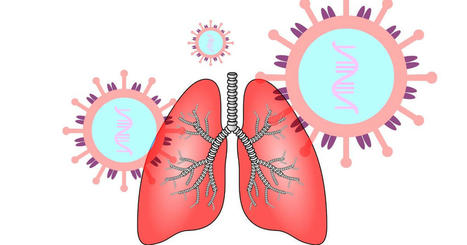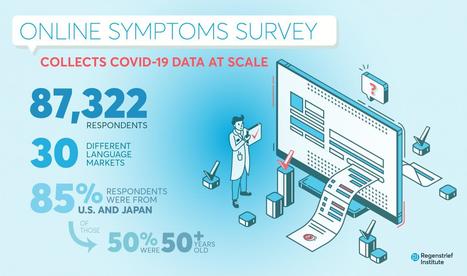healthcare technology

Mobile health (mhealth) tools delivered through wireless technology are emerging as effective strategies for
- delivering quality training,
- ensuring rapid clinical decision making and
- monitoring implementation of simple and effective interventions in under-resourced settings.
We share our early experience of development and deployment of the InStrat COVID-19 health worker training application (App) based on the MediXcel Lite #mHealth platform by Plus91 technologies in Ogun state, Western Nigeria where the country's first case was reported.
This App was designed to
- directly provide frontline health workers with accurate and up-to-date information about COVID-19;
- enable them to quickly identify, screen and manage COVID-19 suspects;
- provide guidance on specimen collection techniques and safety measures to observe within wards and quarantine centres dealing with COVID-19.
The App was deployed in 271 primary health care facilities in Ogun State and a total of 311 health workers were trained. Of the 123 health workers who completed knowledge pre-and post-tests, their average test score improved from 47.5(±9.4) % to 73.1(±10.0) %, P < 0.0001 after using the tutorial.
Rapid adoption and uptake were driven largely by public-private sector involvement as well as certification with reported satisfaction levels of over 95%.
Challenges encountered included a lack of universal availability of android phones for frontline health workers, lack of internet access in remote areas and a need to incentivize the workers.
The timely deployment of this App targeting primary health care workers, mostly in hard-to-reach areas, obviated the need for conventional didactic training with potential of savings in training costs and time and could be applied to similar contexts.
This novel use of mobile health training to shore up training of front line health workers in a resource-limited setting during a pandemic has applicability to similar contexts.
Lire l'article complet sur : www.researchgate.net

“ATMAN AI”, an Artificial Intelligence algorithm that can detect the presence of COVID-19 disease in Chest X Rays, has been developed to combat COVID fatalities involving lung. ATMAN AI is used for chest X-ray screening as a triaging tool in Covid-19 diagnosis, a method for rapid identification and assessment of lung involvement. This is a joint effort of the DRDO Centre for Artificial Intelligence and Robotics (CAIR), 5C Network & HCG Academics. This will be utilized by online diagnostic startup 5C Network with support of HCG Academics across India.
Triaging COVID suspect patients using X Ray is fast, cost effective and efficient. It can be a very useful tool especially in smaller towns in India owing to lack of easy access to CT scans there.
This will also reduce the existing burden on radiologists and make CT machines which are being used for COVID be used for other diseases and illness owing to overload for CT scans.
The novel feature namely “Believable AI” along with existing ResNet models have improved the accuracy of the software and being a machine learning tool, the accuracy will improve continually.
Chest X-Rays of RT-PCR positive hospitalized patients in various stages of disease involvement were retrospectively analysed using Deep Learning & Convolutional Neural Network models by an indigenously developed deep learning application by CAIR-DRDO for COVID -19 screening using digital chest X-Rays. The algorithm showed an accuracy of 96.73%.
read more at http://indiaai.gov.in/news/drdo-cair-5g-network-and-hcg-academics-develop-atman-ai
Lire l'article complet sur : indiaai.gov.in

We discuss the concept of a participatory digital contact notification approach to assist tracing of contacts who are exposed to confirmed cases of coronavirus disease (COVID-19);
The core functionality of our concept is to provide a usable, labor-saving tool for contact tracing by confirmed cases themselves
the approach is simple and affordable for countries with limited access to health care resources and advanced technology.
The proposed tool serves as a supplemental contract tracing approach to counteract the shortage of health care staff while providing privacy protection for both cases and contacts.
- This tool can be deployed on the internet or as a plugin for a smartphone app.
- Confirmed cases with COVID-19 can use this tool to provide contact information (either email addresses or mobile phone numbers) of close contacts.
- The system will then automatically send a message to the contacts informing them of their contact status, what this status means, the actions that should follow (eg, self-quarantine, respiratory hygiene/cough etiquette), and advice for receiving early care if they develop symptoms.
- The name of the sender of the notification message by email or mobile phone can be anonymous or not.
- The message received by the contact contains no disease information but contains a security code for the contact to log on the platform to retrieve the information.
Conclusion
The successful application of this tool relies heavily on public social responsibility and credibility, and it remains to be seen if the public would adopt such a tool and what mechanisms are required to prevent misuse.
This is a simple tool that does not require complicated computer techniques despite strict user privacy protection design with respect to countries and regions. Additionally, this tool can help avoid coercive surveillance, facilitate the allocation of health resources, and prioritize clinical service for patients with COVID-19. Information obtained from the platform can also increase our understanding of the epidemiology of COVID-19.
read this concept paper at https://mhealth.jmir.org/2020/6/e20369
Lire l'article complet sur : mhealth.jmir.org






